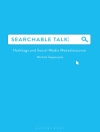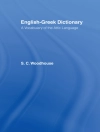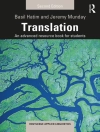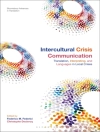The Bible is one of the books that has aroused the most interest throughout history to the present day. However, there is one topic that has mostly been neglected and which today constitutes one of the most emblematic elements of the visual culture in which we live immersed: the language of colour. Colour is present in the biblical text from its beginning to its end, but it has hardly been studied, and we appear to have forgotten that the detailed study of the colour terms in the Bible is essential to understanding the use and symbolism that the language of colour has acquired in the literature that has forged European culture and art. The objective of the present study is to provide the modern reader with the meaning of colour terms of the lexical families related to the green tonality in order to determine whether they denote only color and, if so, what is the coloration expressed, or whether, together with the chromatic denotation, another reality inseparable from colour underlies/along with the chromatic denotation, there is another underlying reality that is inseparable from colour. We will study the symbolism that/which underpins some of these colour terms, and which European culture has inherited. This lexicographical study requires a methodology that allows us to approach colour not in accordance with our modern and abstract concept of colour, but with the concept of the ancient civilations. This is why the concept of colour that emerges from each of the versions of the Bible is studied and compared with that found in theoretical reflection in both Greek and Latin. Colour thus emerges as a concrete reality, visible on the surface of objects, reflecting in many cases, not an intrinsic quality, but their state. This concept has a reflection in the biblical languages, since the terms of colour always describe an entity (in this sense one can say that they are embodied) and include within them a wide chromatic spectrum, that is, they are mostly polysemic. Structuralism through the componential analysis, although providing interesting contributions, had at the same time serious shortcomings when it came to the study of colour. These were addressed through the theoretical framework provided by cognitive linguistics and some of its tools such as: cognitive domains, metonymy and metaphor. Our study, then, is one of the first to apply some of the contributions of cognitive linguistics to lexicography in general, and particularly with reference to the Hebrew, Greek and Latin versions of the Bible.A further novel contribution of this research is that the meaning is expressed through a definition and not through a list of possible colour terms as happens in dictionaries or in studies referring to colour in antiquity. The definition allows us to delve deeper and discover new nuances that enrich the understanding of colour in the three great civilizations involved in our study: Israel, Greece and Rome.
Anna Angelini & Carlos Santos Carretero
Language of Colour in the Bible [PDF ebook]
Embodied Colour Terms related to Green
Language of Colour in the Bible [PDF ebook]
Embodied Colour Terms related to Green
购买此电子书可免费获赠一本!
语言 英语 ● 格式 PDF ● 网页 254 ● ISBN 9783110767704 ● 翻译者 Donald Murphy ● 出版者 De Gruyter ● 发布时间 2022 ● 下载 3 时 ● 货币 EUR ● ID 9435223 ● 复制保护 Adobe DRM
需要具备DRM功能的电子书阅读器












